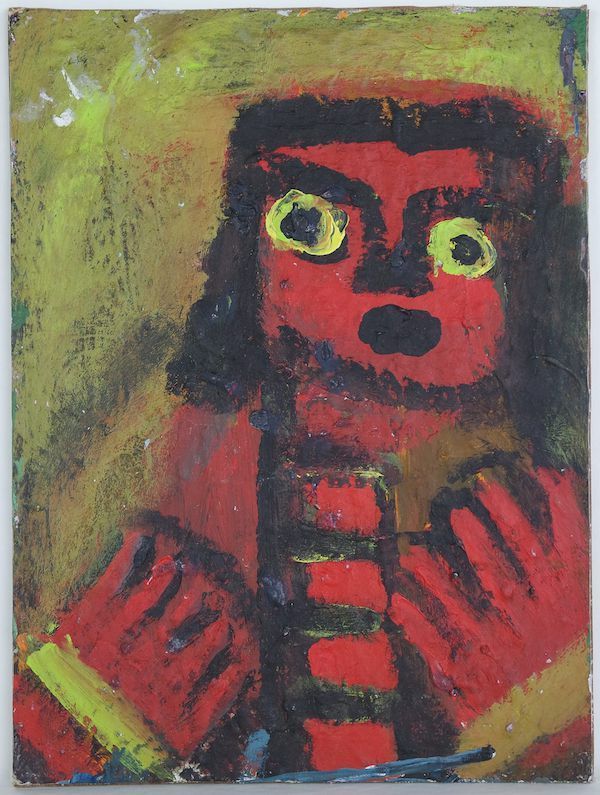Name/Title
untitledEntry/Object ID
2018.4.20Description
A half-portrait painting that is possibly an early work of Mumma's, given the curvature of the hands and absence of Mr. Eddy's signature. The figure's skin and buttons on its clothes are a deep red, teeming over its rectangular head and black hair. The eyebrow and nose shape of the figure demonstrates Mumma's traditional technique of stylization, including the piercing, circular eyes depicted in this portrait with a lime green paint. The hands of the figure lack Mr. Eddy's typical comb-like shape, more closely resembling the true shape of fingers. Nonetheless, their importance to the portrait exemplifies the fascination he had with hands early in his painting career. Their intense red is offset by the sleeves of the figure's jacket, each representative of the colors in the background: a vibrant chartreuse and a more muted, neutral yellow-beige paint. In the background, they are merged and layered over one another with streaks of black. There is a splash of white paint in the upper left corner that may have been a result of Mr. Eddy's disorderly inventory of his paintings; often times, he leaned wet canvases against one another, leading to the destruction of both paintings.Artwork Details
Medium
Acrylic Paint, Canvas on Cardboard on MasoniteCollection
Southern Vernacular Art CollectionAcquisition
Accession
2018.4Source or Donor
Mr. Josh FeldsteinAcquisition Method
DonationCredit Line
Josh FeldsteinMade/Created
Artist Information
Artist
Mumma, EddyRole
ArtistDate made
1966 - 1986Interpretative Labels
Label
Edward "Mr. Eddy" Mumma (1908-1986)
Edward Mumma was born in Milton, Ohio, and after his wife's death in 1966 retired to Gainesville, Florida. Most of Edward Mumma's work consists of abstract versions of portraits focusing on faces and hands. His portraits almost always depict the same close-up, expressionless round face, with variations of colors, hand placements, and dress. Often, Mumma painted on both sides of his canvas or board paintings, and crudely framed them with scrap wood or plastic.Created By
admin@catalogit.appCreate Date
March 13, 2018
